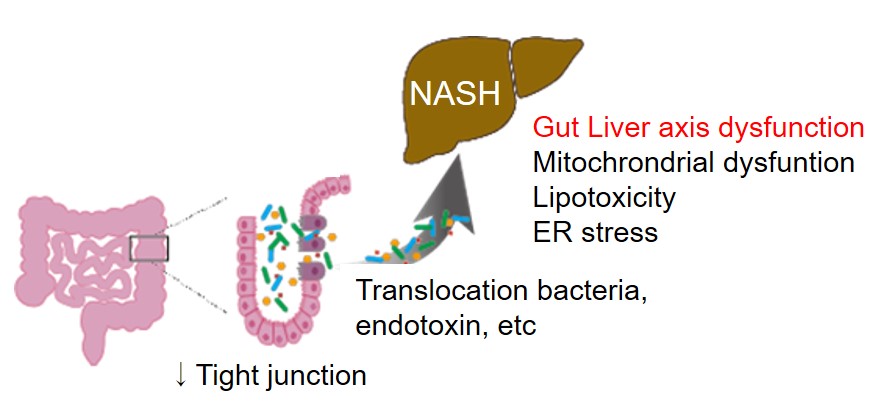Effect of the gut-liver axis dysfunction in liver disease
Today, We would like to introduce the relationship between Metabolic Dysfunction-Associated Steatotic Liver Disease (MASLD) and the gut.
MASLD is a disease that progresses from fatty liver to Metabolic Dysfunction-Associated Steatohepatitis (MASH) to liver fibrosis and finally to liver cancer. As various factors such as diet and metabolic abnormalities are involved in the progression of MASLD, the multiple parallel hit hypothesis is now widely accepted. Factors contributing to the progression of the disease include oxidative stress, lipotoxicity, and mitochondrial dysfunction, and recently much attention has been focused on gut-liver axis dysfunction.

The gut and the liver are connected by a blood vessel called the portal vein, through which about 70% of the blood supply to the liver passes. Therefore, a series of bacteria, bacterial metabolites and toxins originating from the gut can affect the liver through the portal vein.
In NASH patients, changes in the microbiome and increased intestinal permeability (Leaky Gut) have been observed (Lixin et al., Hepatology, 2012; Jay et al., CMGH, 2015).
In fact, analyses in mouse models have shown that dysfunction of the gut-liver axis, such as increased intestinal permeability, bacterial overgrowth and enterotoxemia, contribute to the progression of inflammation and fibrosis in the liver.
For these reasons, we believe that a pathological model that also shows abnormalities in the gut would allow for a more accurate assessment of MASH.
The STAMTM model – developed in-house here at SMC – is the world’s first mouse model that induces MASH and MASH-derived liver cancer, has been reported to show changes in the microbiome (Guoxiang et al., Oncotarget., 2016)
As probiotics have been shown to improve MASH pathology through improvement of the gut environment, if you have a compound that may improve gut disease, why not evaluate it using this model?
